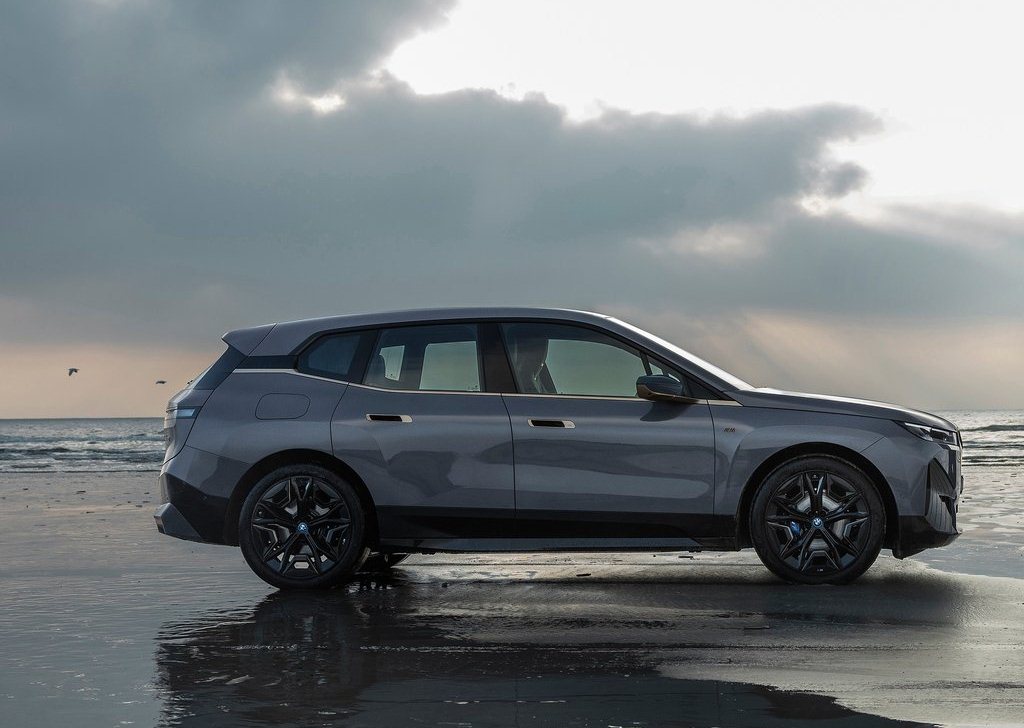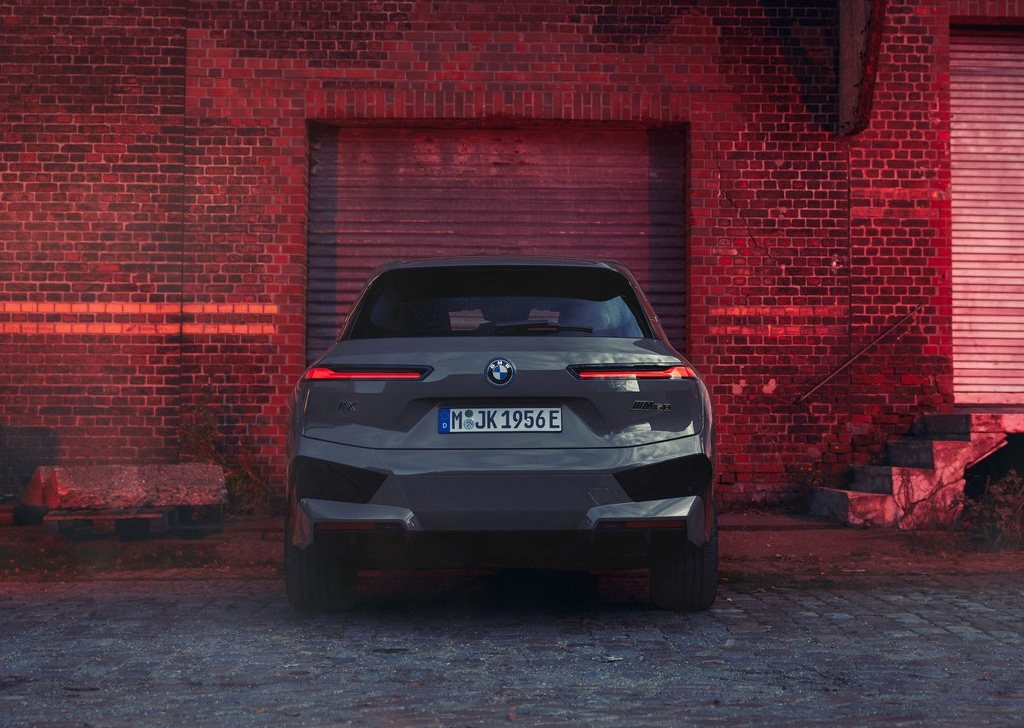Green light for the first BMW M automobile designed for purely electric mobility from the outset. The BMW Group presents the third, even more powerful model variant of its new technology flagship: the BMW iX M60. With an output of 455 kW/619 hp, a maximum torque of 1015 Nm in Sport Mode respectively 1100 Nm with activated Launch Control and an M specific suspension set-up, it adds an outstanding performance experience to the world of locally emission-free mobility. The BMW iX M60 combines a vehicle concept consistently geared towards sustainability with the design of a modern Sports Activity Vehicle and thrilling dynamic driving characteristics. In this way it embodies the best of the three worlds of BMW i, the BMW X models and BMW M GmbH. With its technological highlights, which also include the areas of automated driving, operation and connectivity, the new BMW iX M60 represents a new understanding of advanced luxury, high performance and premium character.
The start signal for electric mobility in hallmark BMW M brand style. The BMW iX M60 accelerates from a standstill to 100 km/h in only 3.8 seconds. The vehement power delivery of its M specific electric drive continues steadily into high load ranges, so that the increase in speed also remains almost constant up to the electronically limited maximum speed of 250 km/h. The range of the BMW iX M60 determined in the WLTP test cycle is up to 566 kilometres. The debut of the BMW iX M60 marks a milestone in the history of BMW M GmbH, which began 50 years ago. Together with the BMW i4 M50, it embodies the departure of the BMW M brand into the segment of electrified performance cars. The extreme power and precise control of the electric all-wheel drive, together with the highly responsive actuator-based wheel slip limitation and a suspension technology that includes, among other things, an M specifically tuned dual-axle air suspension with automatic level control, ensure hallmark BMW M driving experience, agility and precision.
Balanced vehicle concept, extremely sporty orientation
The vehicle concept of the BMW iX provides an ideal basis for an all-electric SAV with high-performance characteristics. Both the body structure and the design principle as well as suspension set-up are geared towards combining superior ride comfort with sporty handling characteristics. The aluminium spaceframe concept and the carbon cage with carbon fibre reinforced plastic (CFRP) in the roof, side and rear sections are an intelligent mix of materials that combines increased rigidity with optimised weight. The use of CFRP to reduce weight has a long tradition at BMW M GmbH. The particularly lightweight high-tech material already achieved great results in combining engine performance and weight in the BMW M3 CSL, which was introduced in 2003. BMW M GmbH thus pioneered the use of CFRP in large-scale automotive production. In numerous current BMW M GmbH high-performance sports cars, a standard carbon fibre roof and other components made of CFRP are part of the intelligent lightweight construction principle. The BMW iX M60's performance, efficiency and range also benefit from its optimised aerodynamic properties, which give it a drag coefficient (Cd value) of 0.26 in Sport Mode. The high-voltage battery is located deep down in the underbody, lowering the vehicle's centre of gravity which ensures agile handling as well as balanced axle load distribution. That is why the performance characteristics of the BMW iX M60 are not only characterised by fascinatingly spontaneous acceleration, but also by outstanding cornering dynamics and handling that can be precisely controlled at all times, even in highly dynamic situations. The perfectly balanced driving characteristics give the BMW iX M60 a confident and light-footed feel at all speeds. It can also be driven at the physical limits giving the driver clear feedback in typical BMW M style.
Independently developed motors with extremely high output
The two motors of the BMW iX M60 operate on the principle of a current energised synchronous machine. Instead of permanently installed permanent magnets, the excitation of the rotor is triggered by the precisely metered supply of electrical energy. This design method makes it possible to completely dispense with the critical raw materials from the rare earth metal sector required for magnetic components when manufacturing rotor. The M specific design of the current-energised synchronous machine principle enables the electric motor of the BMW iX M60 - especially in the case of the rear motor - to achieve an extremely high power density. The drive unit is six-phase operated and has a double inverter. This makes it possible to achieve a particularly significant increase in peak power, which is available up to high speeds and enables M typical power delivery. In addition, power delivery, noise and vibrations as well as efficiency also benefit from this specific motor design. The motors make their maximum torque fully available immediately from a standstill and maintain this over a particularly wide rev band. With a maximum system torque of 1015 Nm in Sport Mode and as much as 1100 Nm when the Launch Control function is activated, the drivetrain of the BMW iX M60 offers outstanding pulling power. 3.8 seconds is all it takes to sprint from a standstill to 100 km/h. The drivetrain's power characteristics provide continuous power delivery which ensures a rapid increase in speed even in higher speed ranges. The maximum speed of the BMW iX M60 is electronically limited to 250 km/h, which is 50 km/h higher than the BMW iX. This makes the BMW iX M60 the fastest all-electric model in the BMW Group.
Latest battery cell technology, innovative charging system
The BMW iX M60 has a high-voltage battery whose net energy content is 105.2 kWh (gross energy content: 111.5 kWh). The latest battery cell technology is characterised by a high energy density as well as outstanding qualities when it comes to performance, charging and discharging behaviour, durability and safety. The Combined Charging Unit (CCU) of the BMW iX M60 was designed for particularly flexible charging. It can charge alternating current with a power of up to 11 kW into the high-voltage battery. Direct current can be charged with a power of up to 200 kW. For example, the battery charge level in the BMW iX M60 can be raised from 10 to 80 percent in around 35 minutes. In addition the range can be increased by up to 150 kilometres within 10 minutes at a DC fast-charging station starting with a battery charge level of 10 percent.


















![2026 Kia Sportage [EU] Review: A Refined European Crossover with Bold Style and Electrified Options](https://blogger.googleusercontent.com/img/b/R29vZ2xl/AVvXsEgqMRwJE1m90uCMgRSB6oc4bAzmAaKXJlNoCwavK5fXHaphLYY1sUVXdxUC94zuj95CdjDG2SqRnUBYMqta-dapTLIaHhzEdJAS821ldVMQOKfAZNpQlZ5fYTwKzKbKj8ad9QeKlaQPcNLRZ6zaGvuXhsg1kQ6zQCQqYtjmOM8q9u-a7Nl3WYjp773OLXJR/w680/2026%20Kia%20Sportage%20%5BEU%5D_01.jpg)



0 Comments